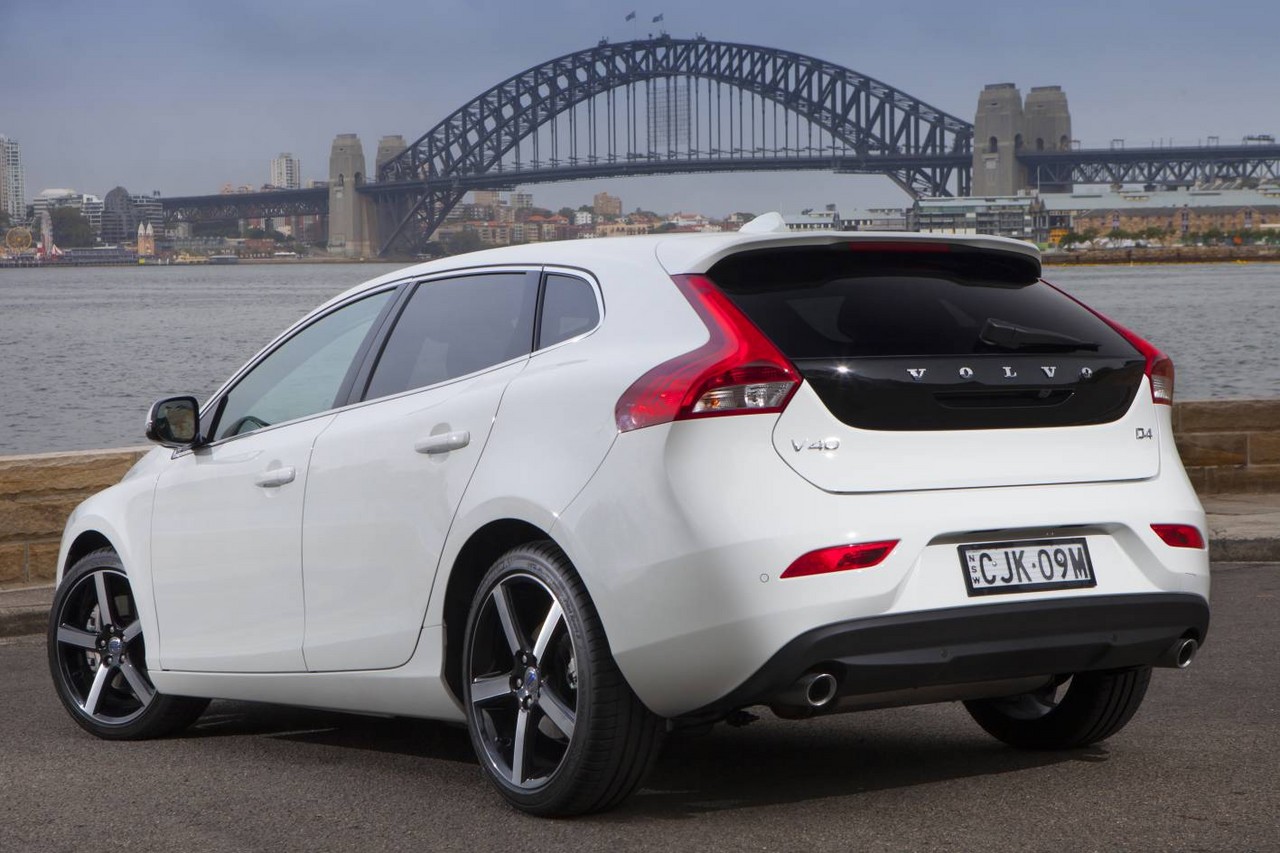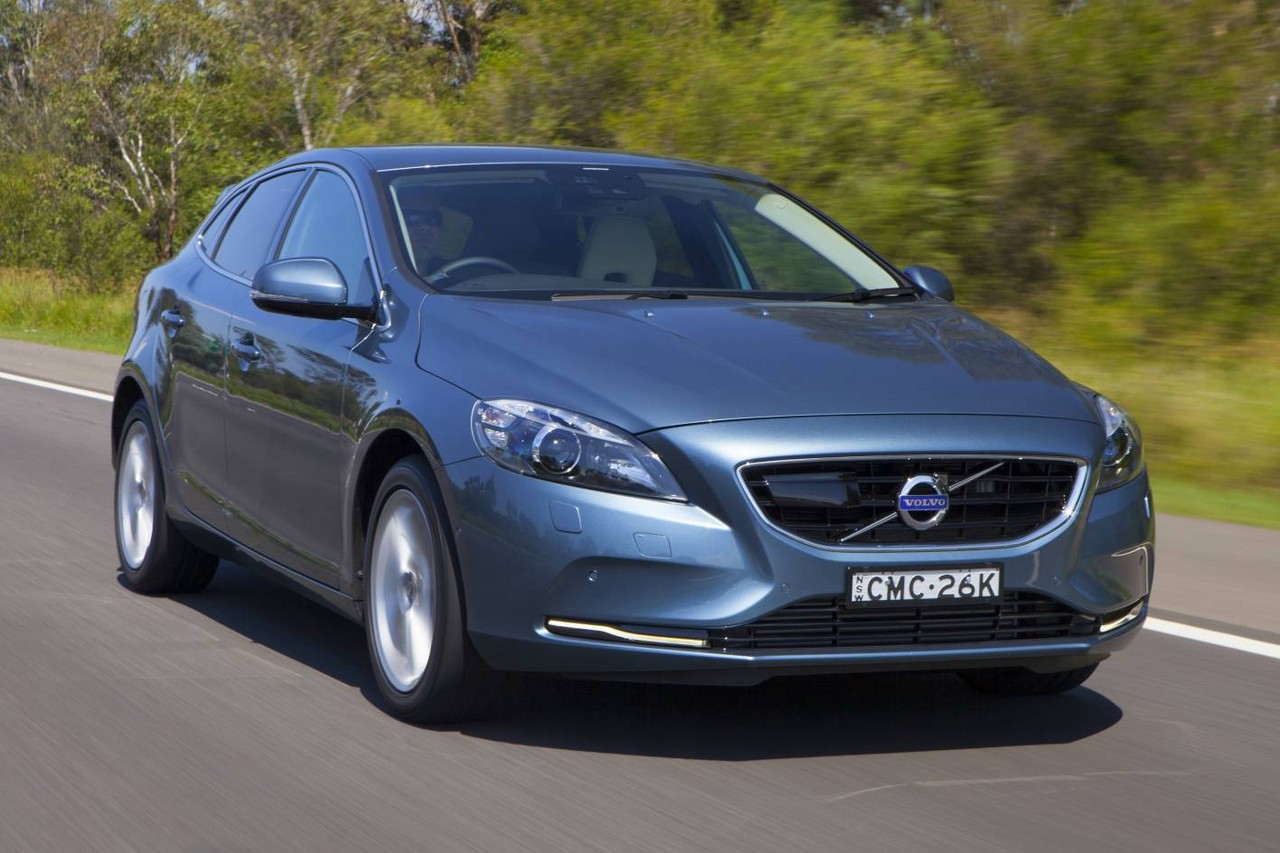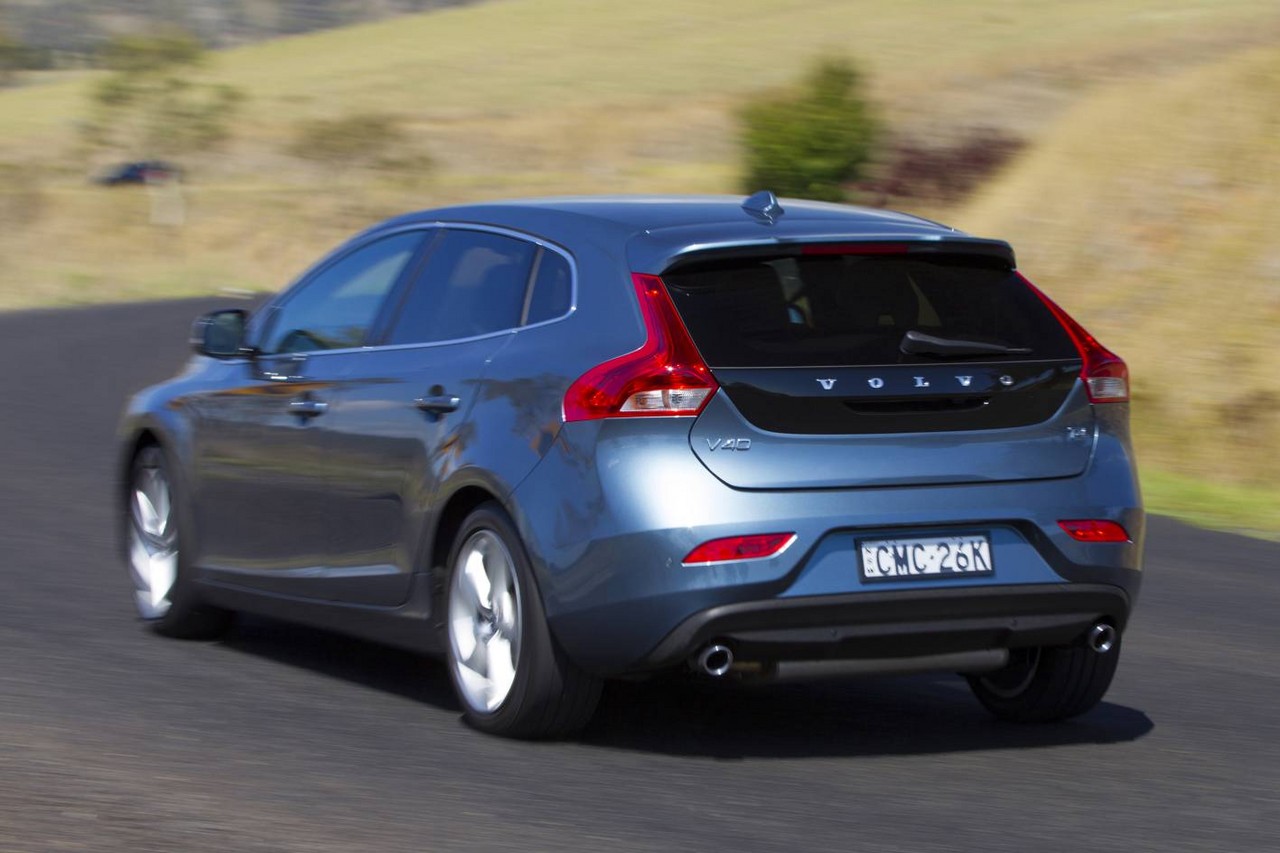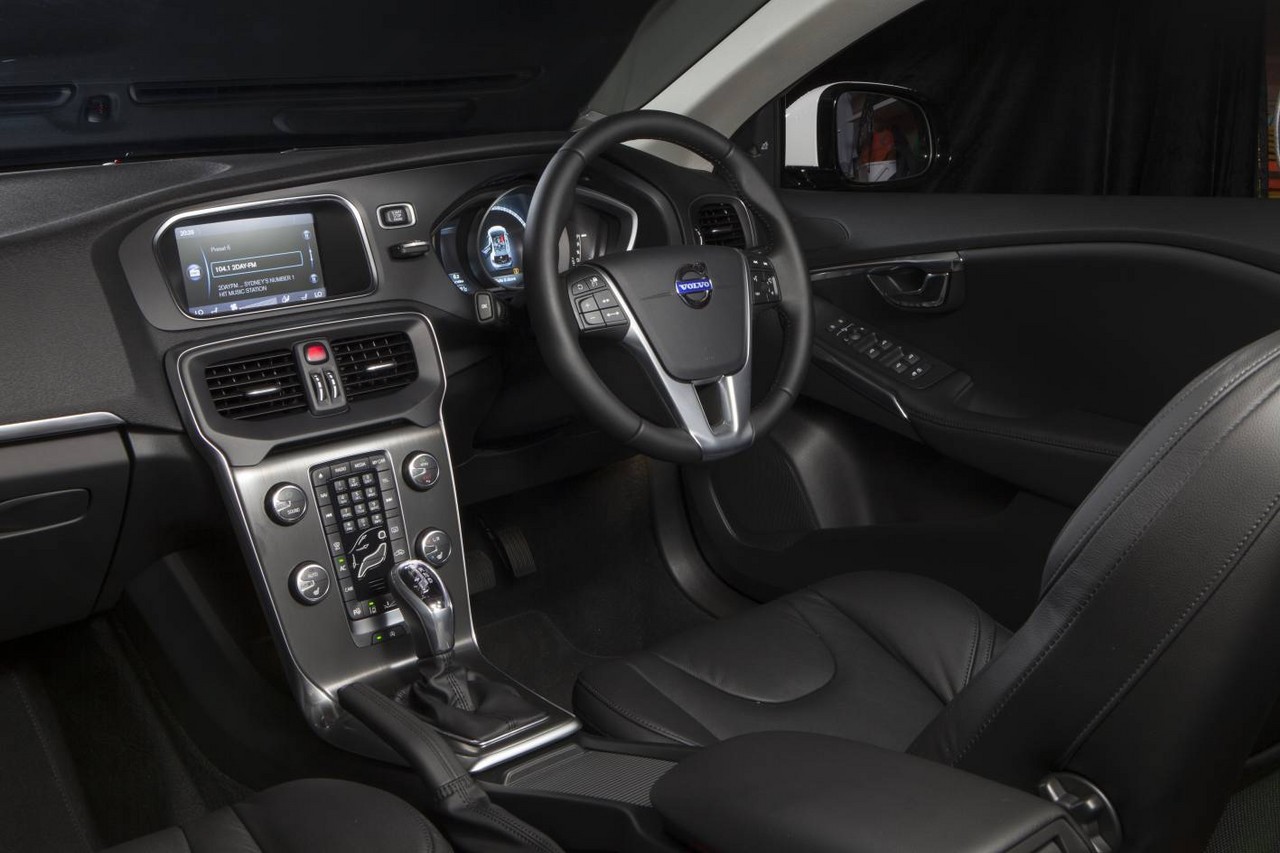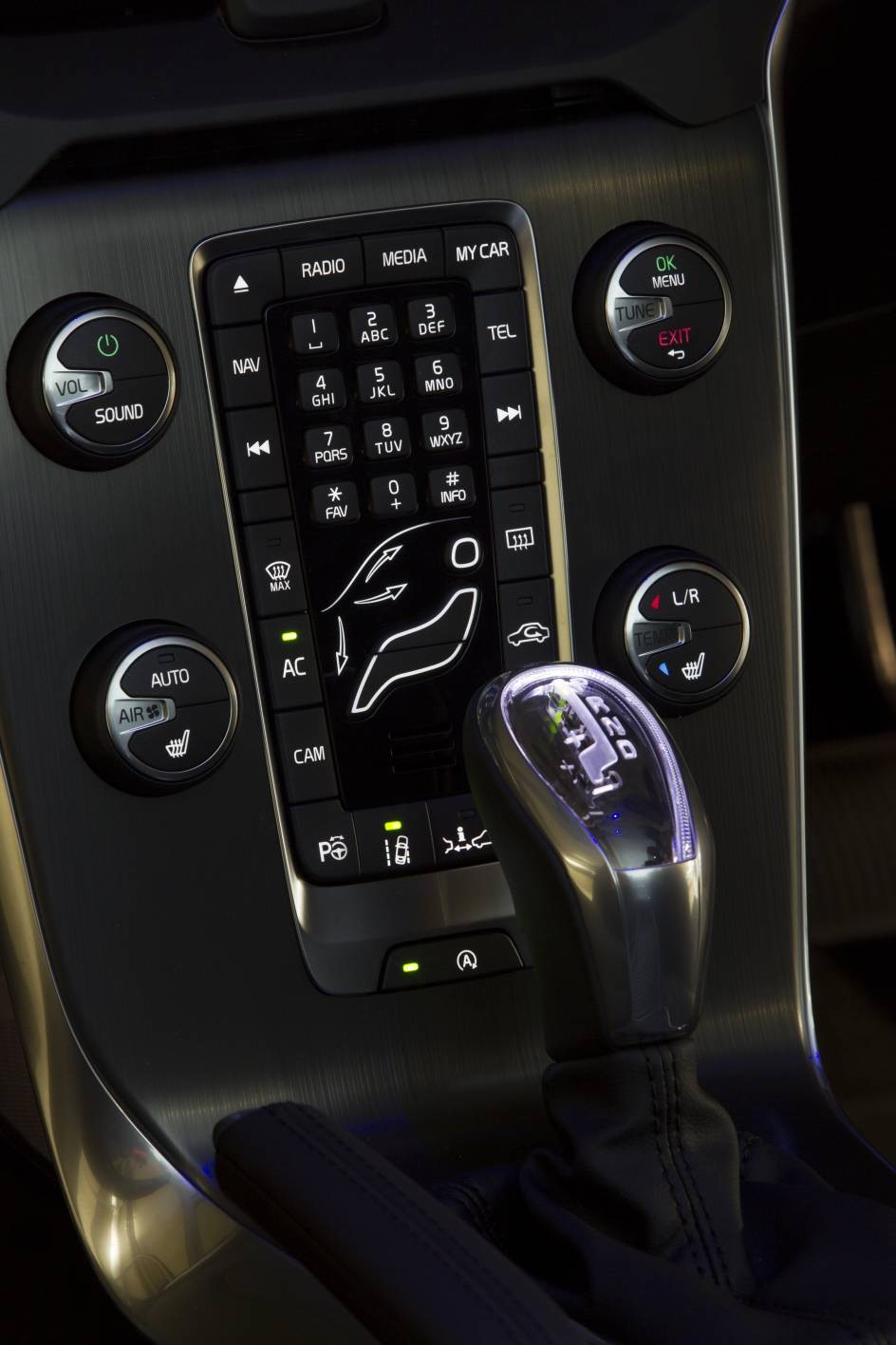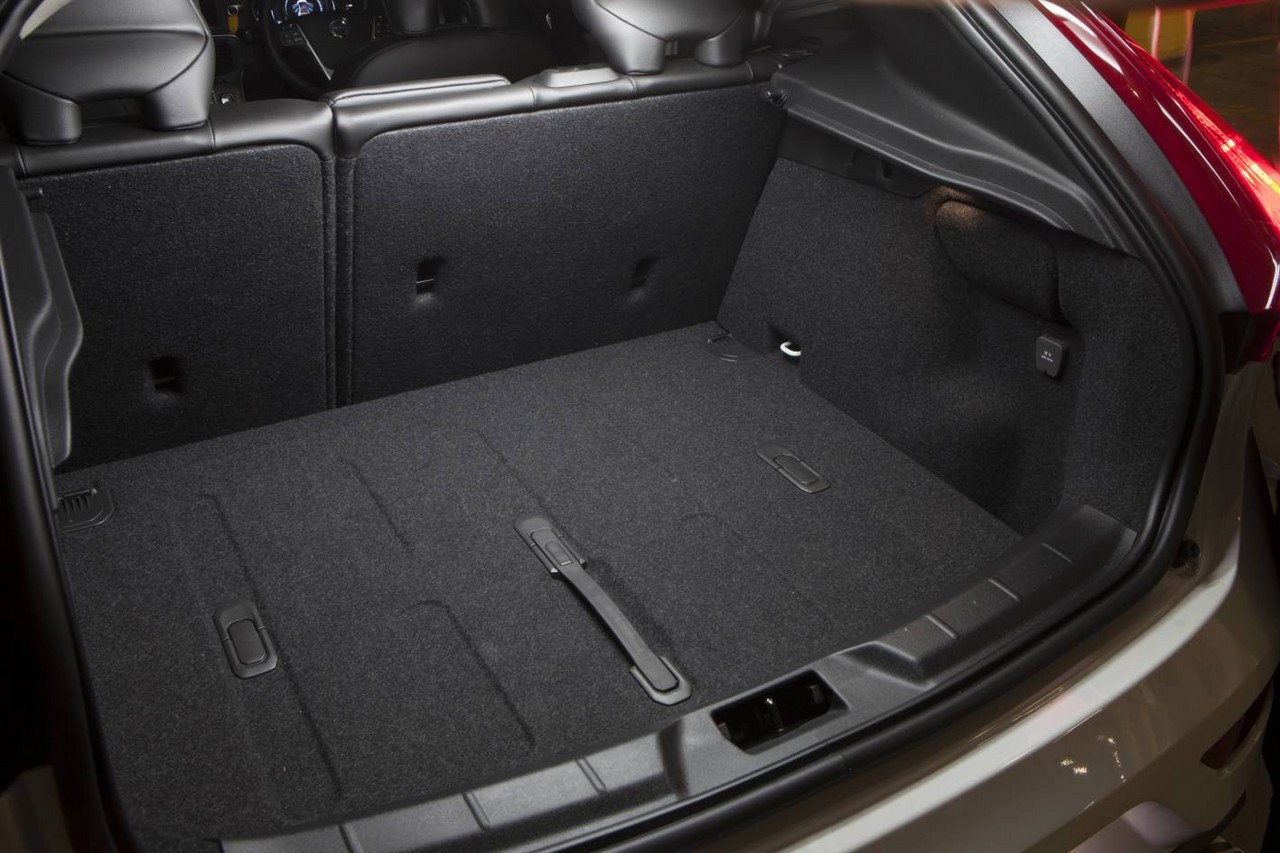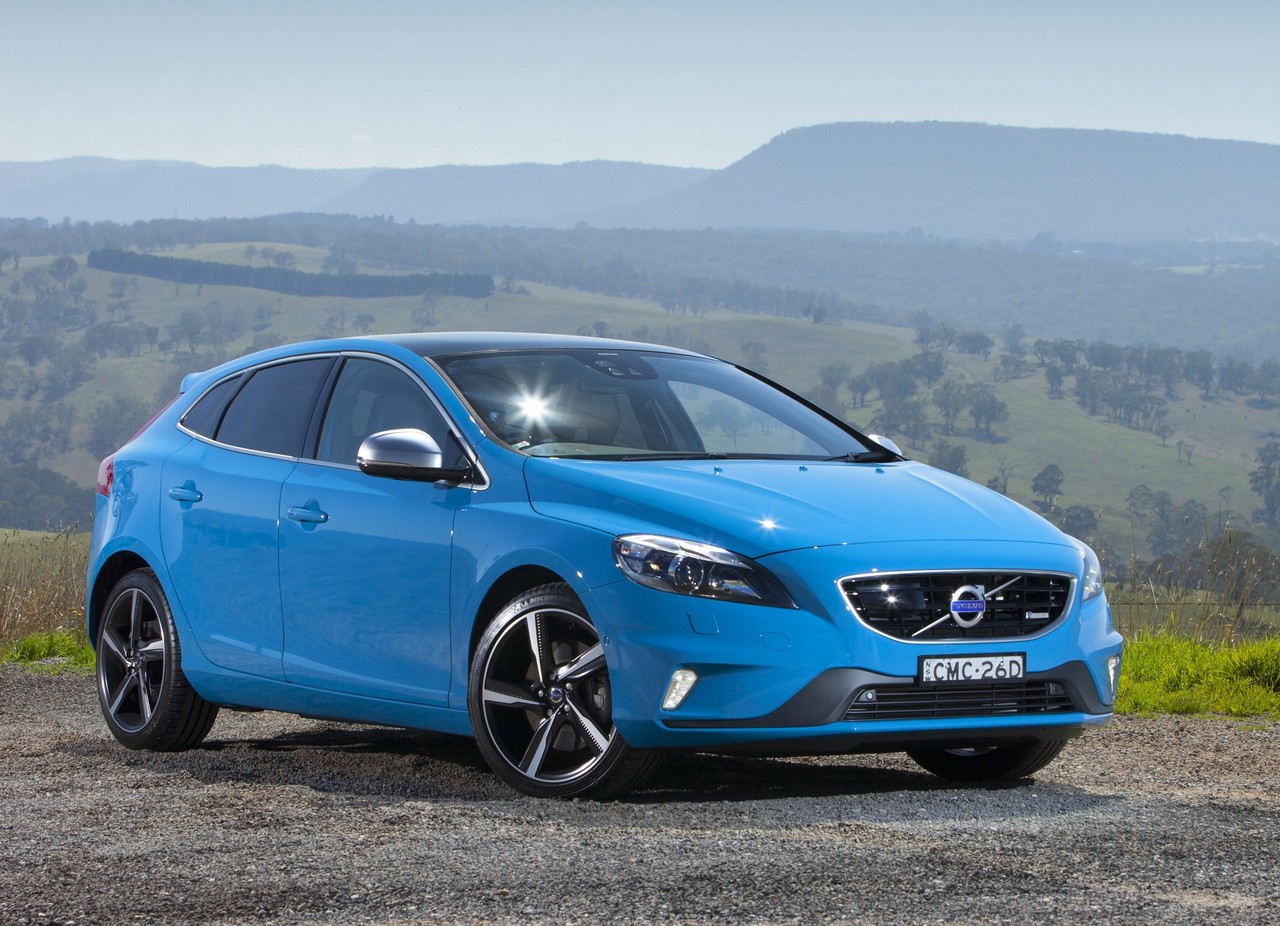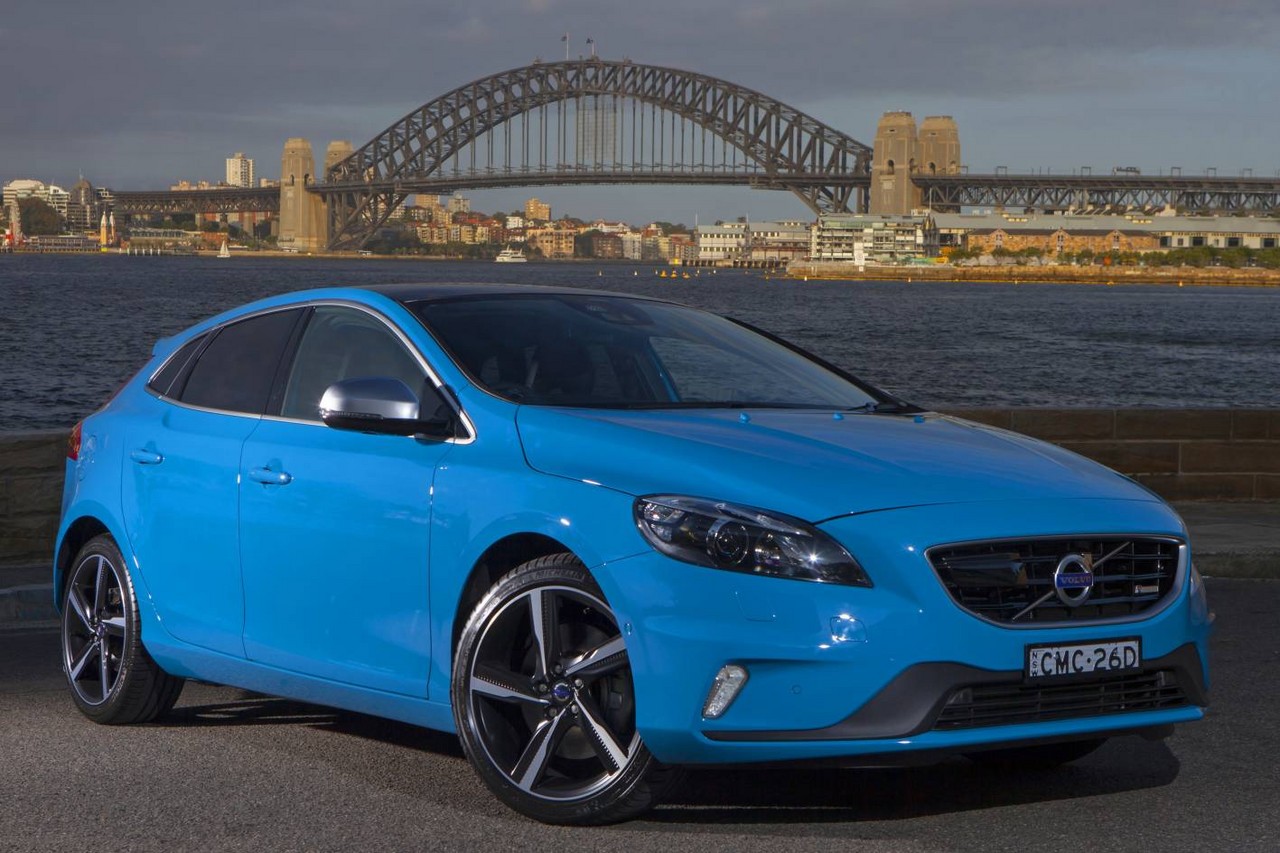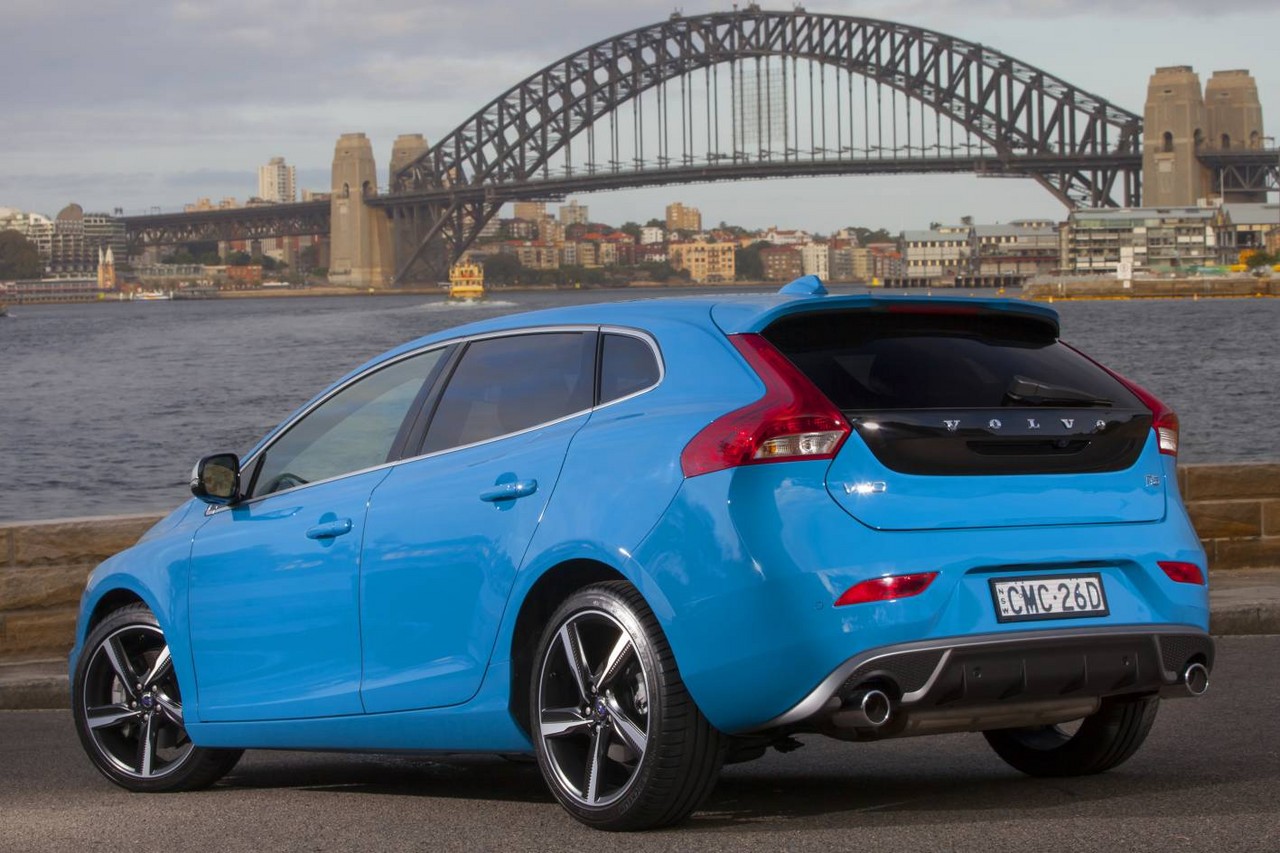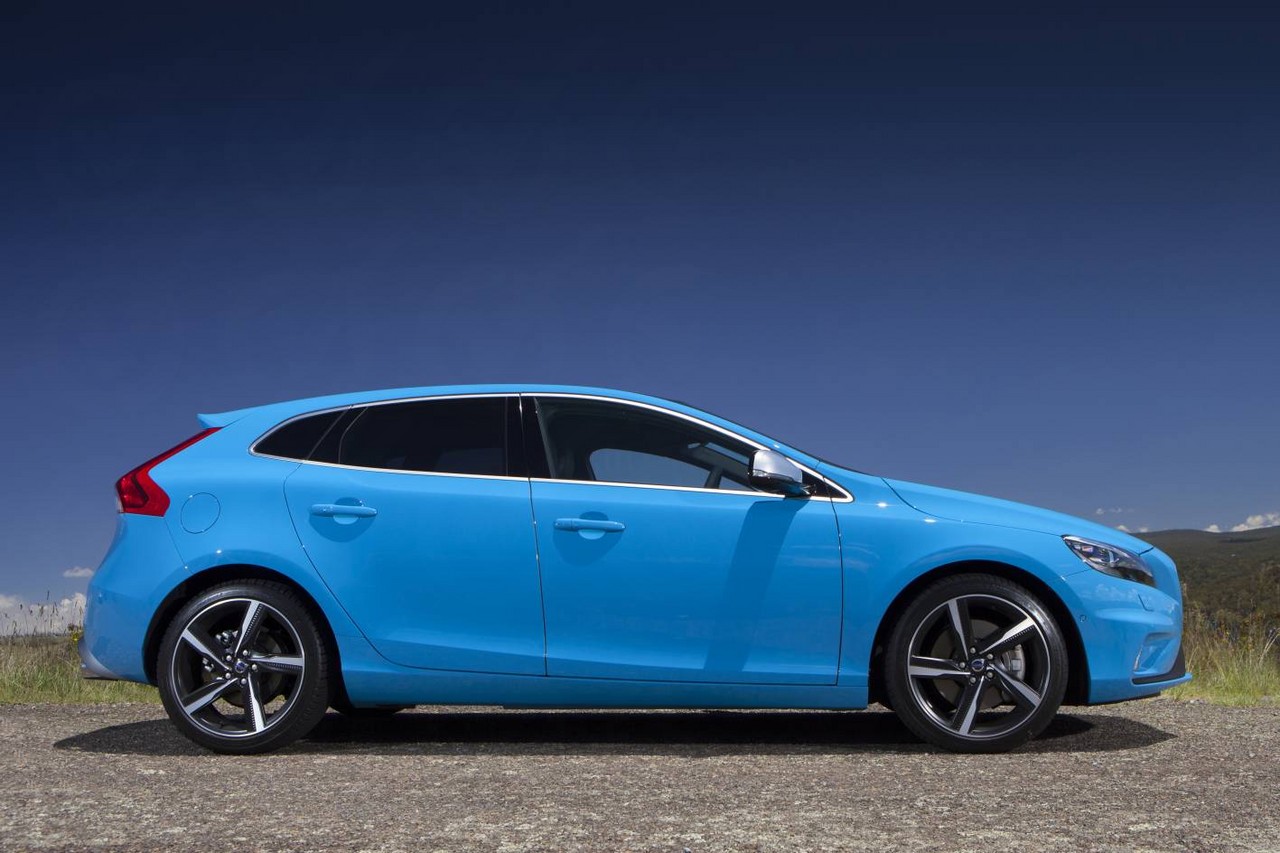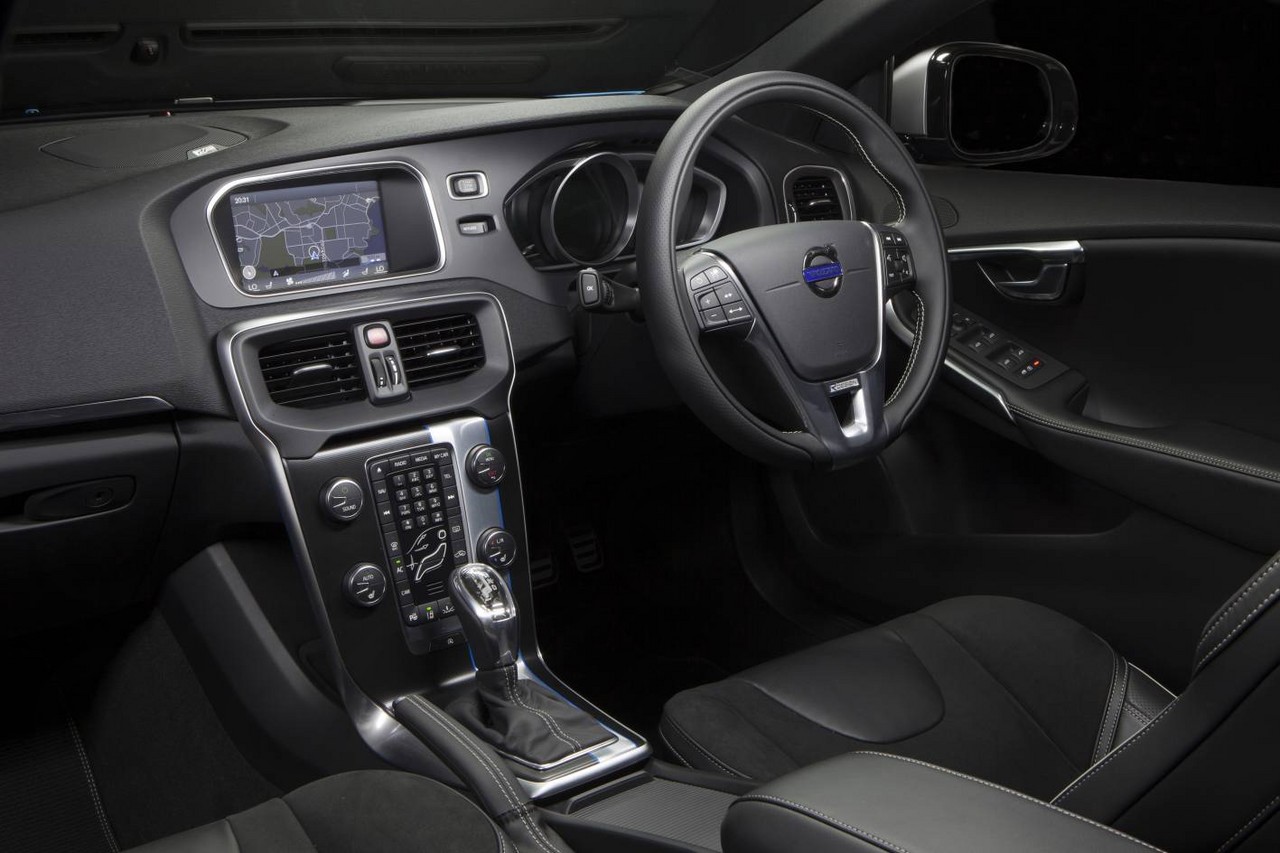
- Willing D4 and T4 engines
- Refined six-speed manual transmission
- Accomplished dynamics
- Upon its release, the highest adult occupant protection score in Euro NCAP testing
- Steering is accurate…
- … but overly assisted and lacks feel
- Suspension lacks compliance
- For V40 T4, six-speed automatic transmission eager to upshift and downshifts lack refinement
- Large turning circle
- Cramped rear seats and limited cargo space
Overview
Released in February 2013, the Volvo V40 was a small, five-door hatchback. Manufactured in Ghent, Belgium, the front-wheel drive Volvo 40 was initially available with 1.6- and 2.0-litre turbo-diesel engines (the D2 and D4 variants, respectively) and 2.0- and 2.5-litre turbocharged petrol engines (the T4 and T5 variants). Beyond the variants, the Volvo V40 was available in Kinetic, Luxury and R-Design editions.
In April 2015, the Volvo V40 range was expanded with the T3 variant.
D4162T, D5204T4, B5204T8, B5254T12 and Drive-E engines
Of the engines,
- The 1.6-litre D4162T (or DV-6C) diesel engine for D2 variants had an aluminium cylinder block and head, a variable geometry turbocharger, common-rail direct injection, a single overhead camshaft, two valves per cylinder and a compression ratio of 16.0:1;
- The 2.0-litre D5204T4 turbo-diesel engine for D4 variants differed in that it had double overhead camshafts, four valves per cylinder and a compression ratio of 16.5:1;
- From October 2014, the D4 variants were powered by Volvo’s 2.0-litre twin-turbo D4204T14 ‘Drive-E’ diesel engine. Rather than use common-rail injection with a conventional single pressure sensor, each injector in the ‘Drive-E’ diesel engine had a chip which monitored injection pressure – up to 2500 bar – for more precise fuel flow (Volvo’s ‘Intelligent Accuracy Refinement Technology’ or ‘i-ART’); and,
- The B5204T8 (for T4 variants) and B5254T12 (for T5 variants) were both members of Volvo’s Modular engine family and had aluminium construction, double overhead camshafts and four valves per cylinder. The B5204T8 (T4) engine, however, had direct injection and a compression ratio of 10.5:1, whereas the B5254T12 (T5) engine had conventional port injection and a compression ratio of 9.5:1
All engines had a ‘Start-Stop’ function which enabled them to shut down when the vehicle was stationary to reduce fuel consumption. Furthermore, regenerative braking – which controlled alternator output to charge the battery when the vehicle was braking or coasting – was also fitted as standard.
| Engine | Edition | Trans. | Years | Peak power | Peak torque | |
|---|---|---|---|---|---|---|
| D2 | 1560 cc D4162T turbo-diesel I4 | Kinetic | 6sp man. | 2013-15 | 84 kW at 3600 rpm | 270 Nm at 1750-2500 rpm |
| 1969 cc D4204T8 turbo-diesel I4 | Kinetic | 6sp auto | 2015-18 | 88 kW at 3750 rpm | 280 Nm at 1500-2250 rpm | |
| D4 | 1984 cc D5204T turbo-diesel I5 | Kinetic | 6sp man., 6sp auto |
2013-14 | 130 kW at 3500 rpm | 400 Nm at 1750-2750 rpm |
| Luxury | 6sp auto | |||||
| 1984 cc D4204T14 twin-turbo diesel I4 | Kinetic, Luxury |
8sp auto | 2014-18 | 140 kW at 4250 rpm | 400 Nm at 1750-2750 rpm | |
| T3 | 1498 cc B4154T4 turbo petrol I4 | Kinetic | 6sp auto | 2015-18 | 112 kW at 5000 rpm | 250 Nm at 1700-4000 rpm |
| T4 | 1984 cc B5204T8 turbo petrol I5 | Kinetic, Luxury |
6sp auto | 2013-15 | 132 kW at 5700 rpm | 300 Nm at 2700-4000 rpm |
| 1969 cc B4204T21 turbo petrol I4 | Luxury | 6sp auto | 2015-18 | 140 kW at 4700 rpm | 300 Nm at 1300-4000 rpm | |
| T5 | 2497 cc B5254T12 turbo petrol I4 | R-Design | 6sp auto | 2013-14 | 187 kW at 5400 rpm | 360 Nm at 1800-4200 rpm (400 Nm with o/boost) |
| 1969 cc B4204T11 turbo petrol I4 | R-Design | 8sp auto | 2014-18 | 180 kW at 5500 rpm | 350 Nm at 1500-4800 rpm |
Dimensions
The Volvo V40 was underpinned by a modified version of Ford’s C1 platform which was also used for the Volvo C30 . Compared to the C30, however, the V40 was 117 mm longer (at 4369 mm), 1 mm wider (1783 mm), 27 mm lower (1420 mm) and had a 7 mm longer wheelbase (2647 mm).
Suspension and steering
The Volvo V40 had MacPherson strut front suspension – with 25 mm piston rods as per the S60 – and independent, multi-link rear suspension with monotube dampers; the V40 also had electric, power-assisted steering.
Safety equipment
Standard safety equipment for the Volvo V40 included dual front airbags, a driver’s knee airbag, front side airbags, full-length curtain airbags, ABS, electronic brake force distribution, brake assist, electronic stability control, traction control and front and outer rear seatbelts with pretensioners and load limiters.
In a world-first, the Volvo V40 was fitted with a pedestrian airbag which – in the event of a collision – inflated from under the rear edge of the bonnet to better protect pedestrians from hard points at the base of the windscreen and the lower A-pillars. The V40 was also fitted Volvo’s ‘City Safety’ system as standard; the City Safety system used lasers to detect vehicles ahead and would provide autonomous braking – to prevent or minimise the severity of a collision – from speeds of up to 50 km/h.
Optional ‘Driver Support’ pack
For the Luxury and R-Design editions, an optional ‘Driver Support’ pack was available which retailed for $5000. The Driver Support pack included:
- Adaptive cruise control: maintained both the speed set by the driver and the distance to the vehicle ahead;
- Pedestrian Detection with Full Auto Brake: a radar sensor integrated into the V40’s grille and a camera fitted in front of the interior rear-view mirror would detect pedestrians in the vehicle’s path. If a collision was anticipated, the driver would receive an audible warning and a flashing light would appear in the windscreen’s head-up display. If the driver did not react and a collision was imminent, full braking power would be applied automatically;
- Road Sign Information: automatically detected road sign information and provided this information in the instrument display;
- The Lane Keeping Aid: used a forward-looking camera to monitor lane markings at speeds between 65 km/h and 200 km/h. If the driver unintentionally drifted out of their lane, the system would provide gentle steering wheel torque to steer the vehicle back onto its intended course. If the vehicle departed from the lane, a warning would be issued via a haptic vibration in the steering wheel;
- Automatic high-beam: automatically switched the headlights from high beams to dipped beams when oncoming traffic was detected;
- Enhanced Blind Spot Information System (BLIS): in addition to conventional blind spot monitoring, a radar would monitor and alert the driver to rapidly approaching vehicles that were up to 70 metres behind the vehicle;
- Cross Traffic Alert: rear radar sensors would alert the driver to crossing traffic – up to 30 metres from the sides of the vehicle – when reversing out of a parking space; and,
- Park Assist Pilot: semi-automated parallel parking whereby the driver only needed to control the vehicle’s speed.
Euro NCAP testing
In Euro NCAP testing , the Volvo V40 received the highest overall safety result in the history of Euro NCAP testing which included the highest adult occupant protection score (98 per cent). The V40 also attained a 75 per cent child occupant protection rating, an 88 per cent pedestrian protection rating and a 100 per cent safety assist rating. In ANCAP’s assessment , this testing resulted in a five star adult occupant protection rating with a score of 36.67 out of 37.
Features: V40 Kinetic and Luxury
Standard safety equipment for the Volvo V40 Kinetic included 16-inch alloy wheels, an eight speaker sound system with a five-inch colour display, auxiliary inputs (3.5 mm/USB/iPod) and Bluetooth connectivity, climate control air conditioning, a power adjustable driver’s seat (with memory settings), cruise control, daytime LED running lights, automatic headlights, rain-sensing wipers, rear parking sensors, 60/40 split and folding rear seats, a cooled glovebox, remote central locking, power windows and folding mirrors, tilt and telescopic steering wheel adjustment, ambient lighting, a 12 volt power outlet, an alarm and immobiliser.
Beyond this, the V40 Luxury was further equipped with a DVD player, satellite navigation with a seven-inch display, leather upholstery, a power adjustable front passenger seat, xenon headlights and a reversing camera.
V40 R-Design editions
Compared to the Luxury editions, the V40 R-Design featured 17-inch diamond-cut alloy wheels, black Nubuck textile and perforated leather seat upholsteries with R-design logos and a unique steering wheel, gear shift, handbrake and sport pedals. Visually, the R-Design editions could be identified by their silk-metal framed high-gloss grille, ‘ironstone’ rear diffuser and twin exhaust tail-pipes. The R-Design editions also had ‘Sport’ suspension which was 10 mm lower and included firmer springs and shock absorbers to better absorb lateral loads.
2014 Volvo V40 T4 Sprint Edition
Released in November 2014, the V40 T4 Sprint Edition was based on the T4 Kinetic but distinguished by its 18-inch ‘Midir’ black diamond cut alloy wheels, sports suspension, tinted rear glass and rear spoiler. Furthermore, the V40 T4 Sprint Edition was available in Black Sapphire, Ice White, Electric Silver and Power Blue paint finishes.
Brochures
- Brochure: Volvo V40 (February 2013)
- Brochure: Volvo V40 (October 2014)
- Brochure: Volvo V40 (October 2015)
Related links
- Technical Specifications: Volvo V40 (August 2013)
- Volvo Newsroom: The all-new Volvo V40 – model year 2013 (August 2012)
- Volvo Newsroom: The all-new Volvo V40 – Driving Dynamics (September 2012)
- Volvo Newsroom: Volvo V40 – model year 2014 (May 2013)
- Volvo Australia: Volvo V40
- Wikipedia.org: Volvo V40

